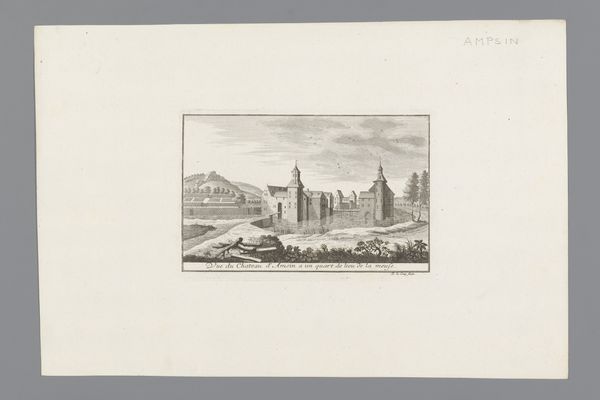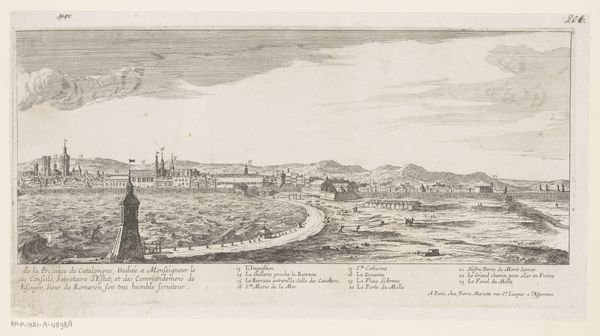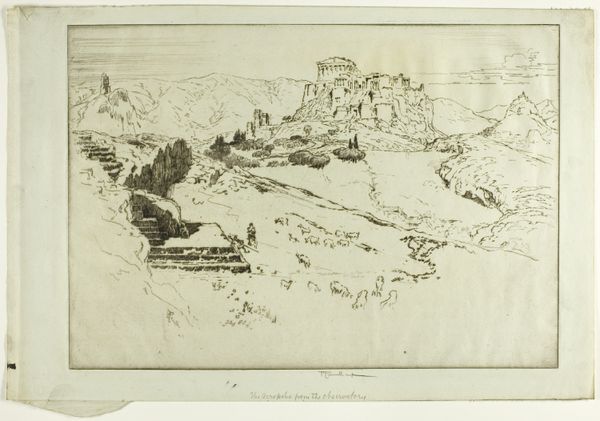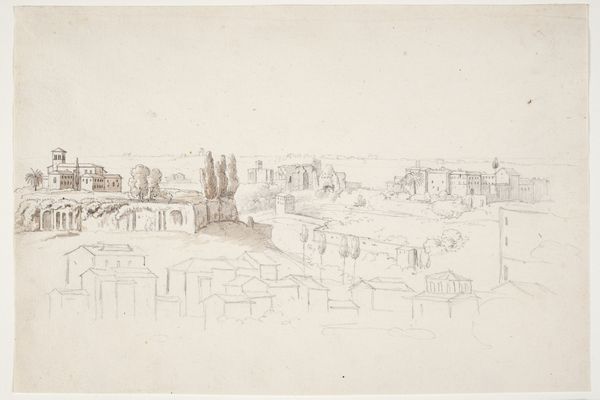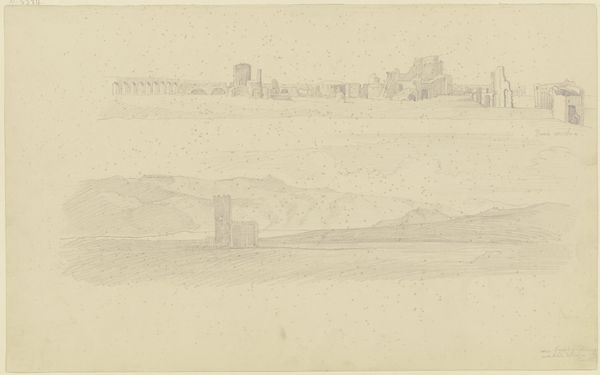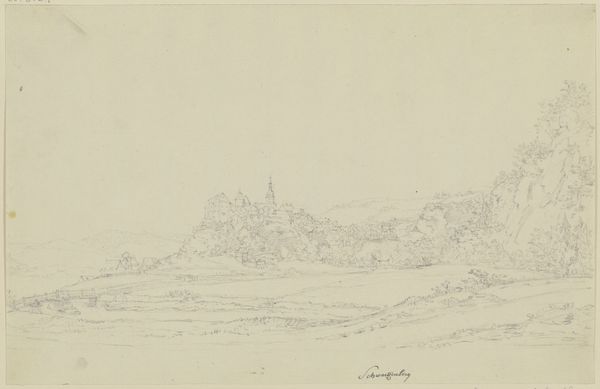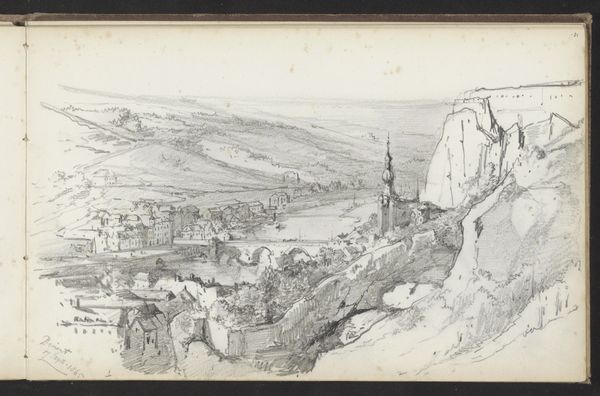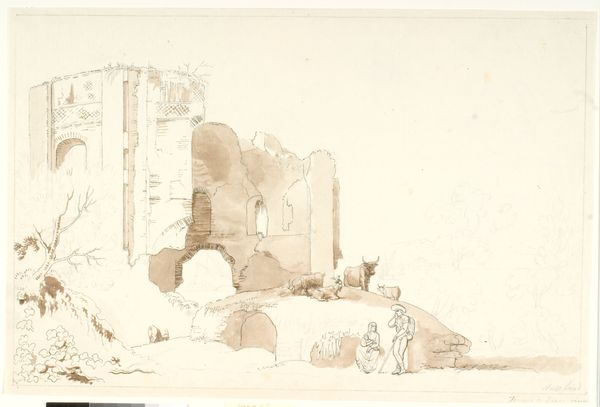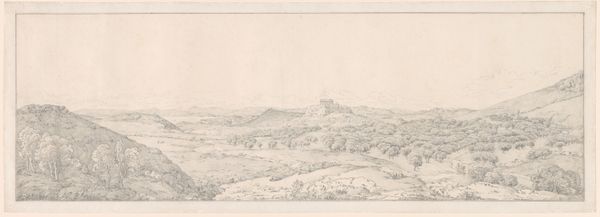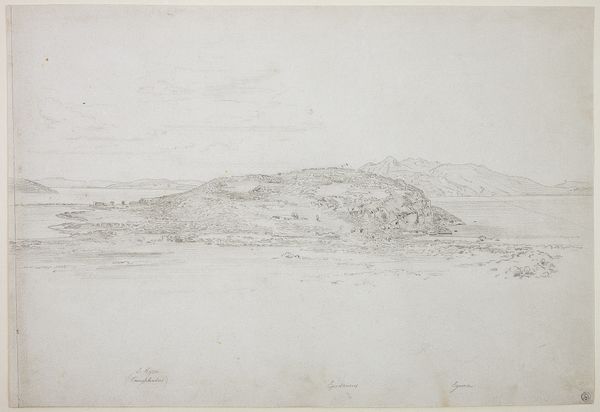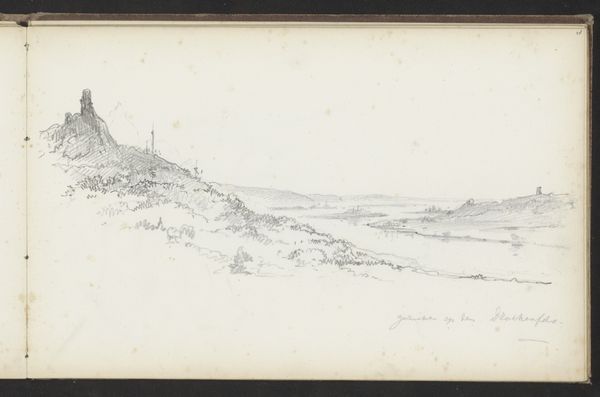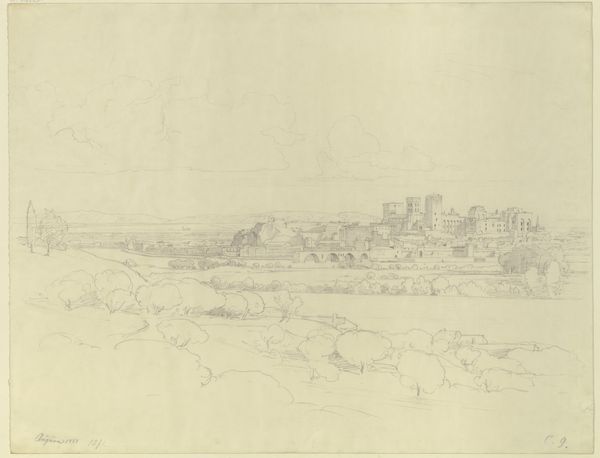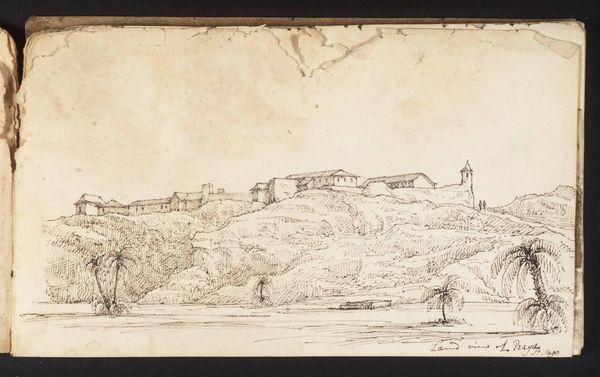
Illustration til "Drawings of some Ruins and Colossal Statues at Thebes in Egypt with an Account of the Fame in a Letter to the Royal Society", London 1741 1741
0:00
0:00
print, engraving
# print
#
landscape
#
ancient-egyptian-art
#
etching
#
ancient-mediterranean
#
history-painting
#
engraving
Dimensions: 254 mm (height) x 420 mm (width) (plademaal)
Curator: I'm immediately struck by the quiet stillness in this image, a kind of faded grandeur. It almost whispers of time and forgotten power. Editor: Well, you've definitely picked up on the feeling. This is "Illustration til 'Drawings of some Ruins and Colossal Statues at Thebes in Egypt'", created by Marcus Tuscher and published in London back in 1741. It's an etching or engraving depicting a scene in Thebes, a kind of document from an era grappling with antiquity. Curator: A document, yes, but more than that, wouldn’t you say? There’s an idealized quality to how the monuments stand almost untouched by the ages. The visual symbols speak to something timeless, don’t they? Ancient Egypt was already ancient for the 18th century. Editor: Certainly, it’s also a product of its time. We need to consider the audience this image was made for. Think of the burgeoning interest in Egyptology in the 18th century, fueled by accounts from travelers and scholars. This image wasn’t just showing Thebes, it was selling it—packaged and disseminated to elite intellectual circles through publications like the Royal Society's. Curator: That's fascinating context. Seeing the image as a carefully constructed visual artifact—but I keep returning to the symbols, those colossal statues, they’re not just representations, they’re almost embodying collective memory. Look at the calm faces, those gestures, suggesting wisdom and authority. Editor: Absolutely. And the medium, etching, allows for these intricate details, echoing the detailed description of Egyptian antiquities gaining public interests at the time. These were luxury items reflecting elite aspirations. It's interesting to consider this image existing within a network of power, knowledge, and colonial expansion. Curator: Precisely! The visual language becomes intertwined with power structures and lasting legacies. Editor: Yes, and while it presents an ancient world, its creation and reception were thoroughly modern phenomena. Something worth keeping in mind. Curator: A haunting image for sure, layering time and interpretation over time. Editor: Indeed. Each element in it adds another perspective that enhances our view of the past.
Comments
No comments
Be the first to comment and join the conversation on the ultimate creative platform.
